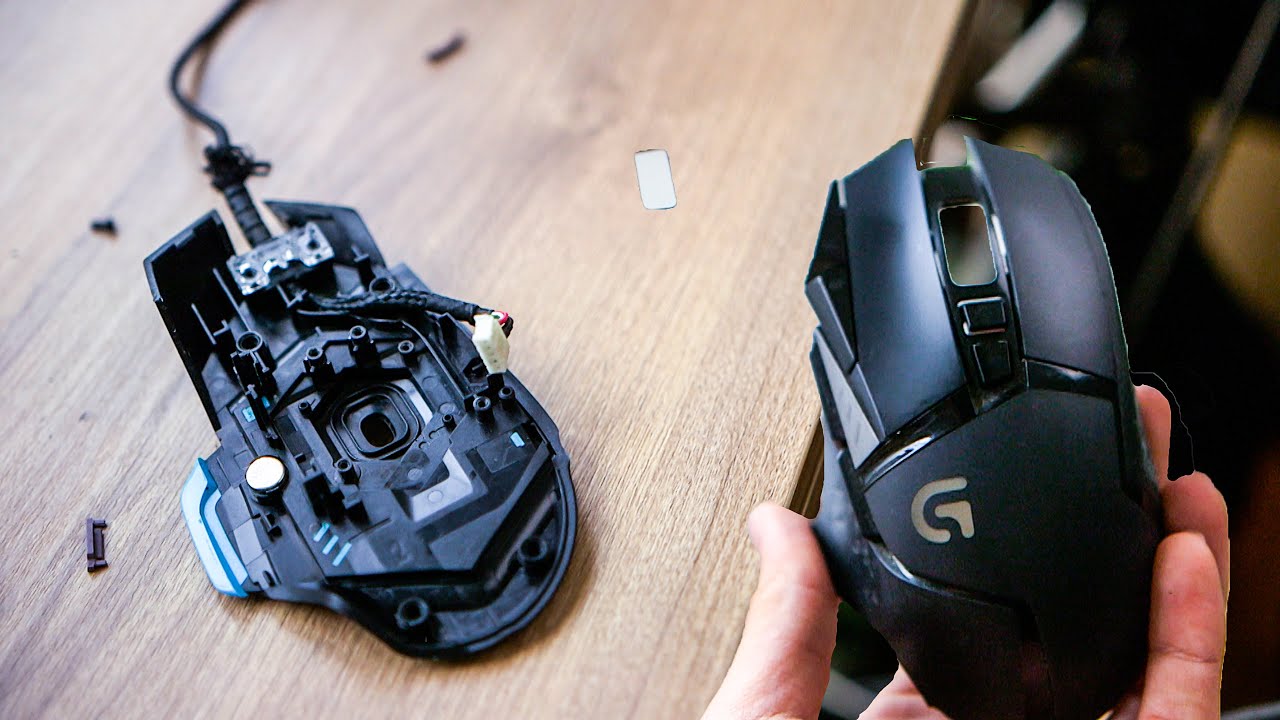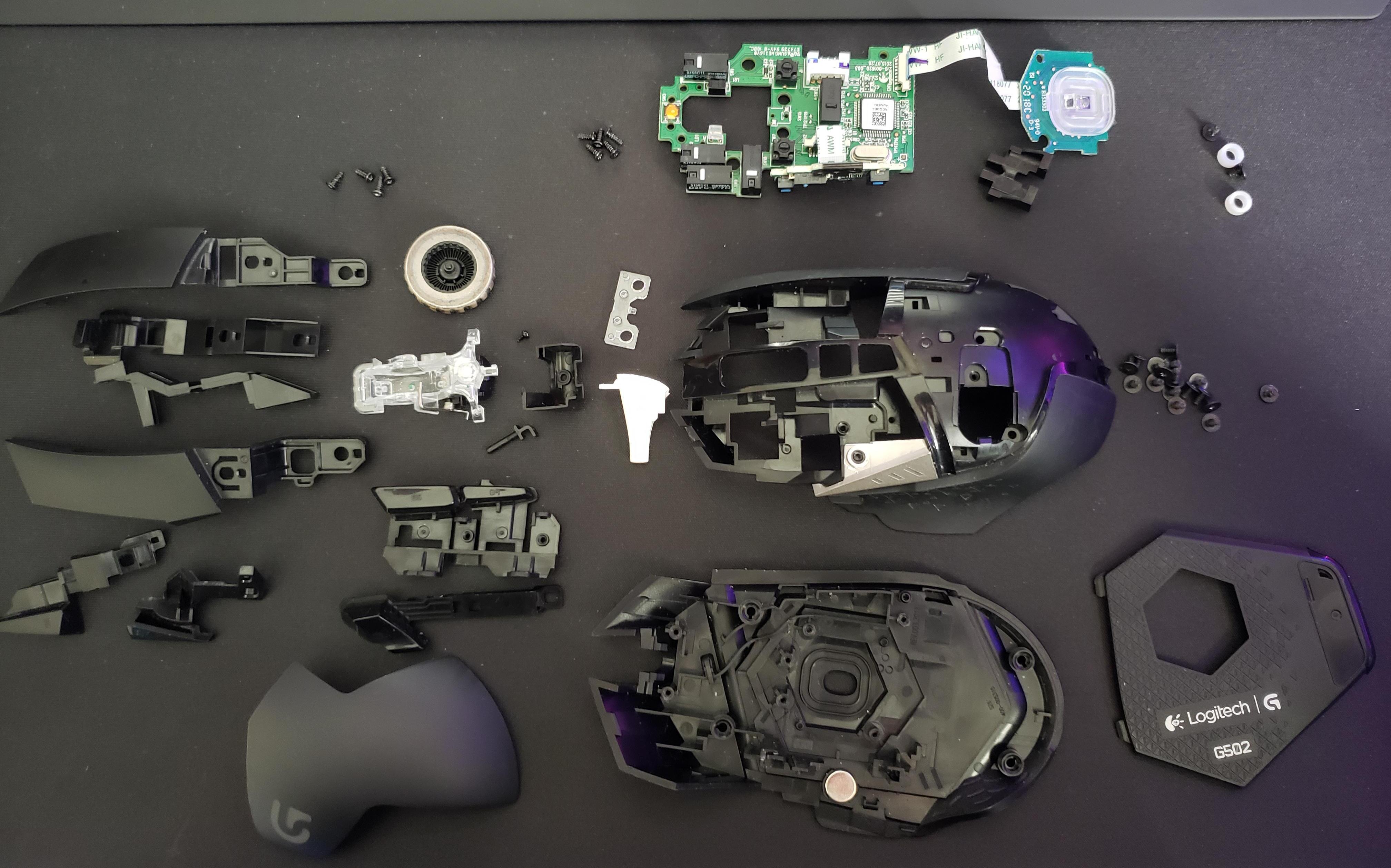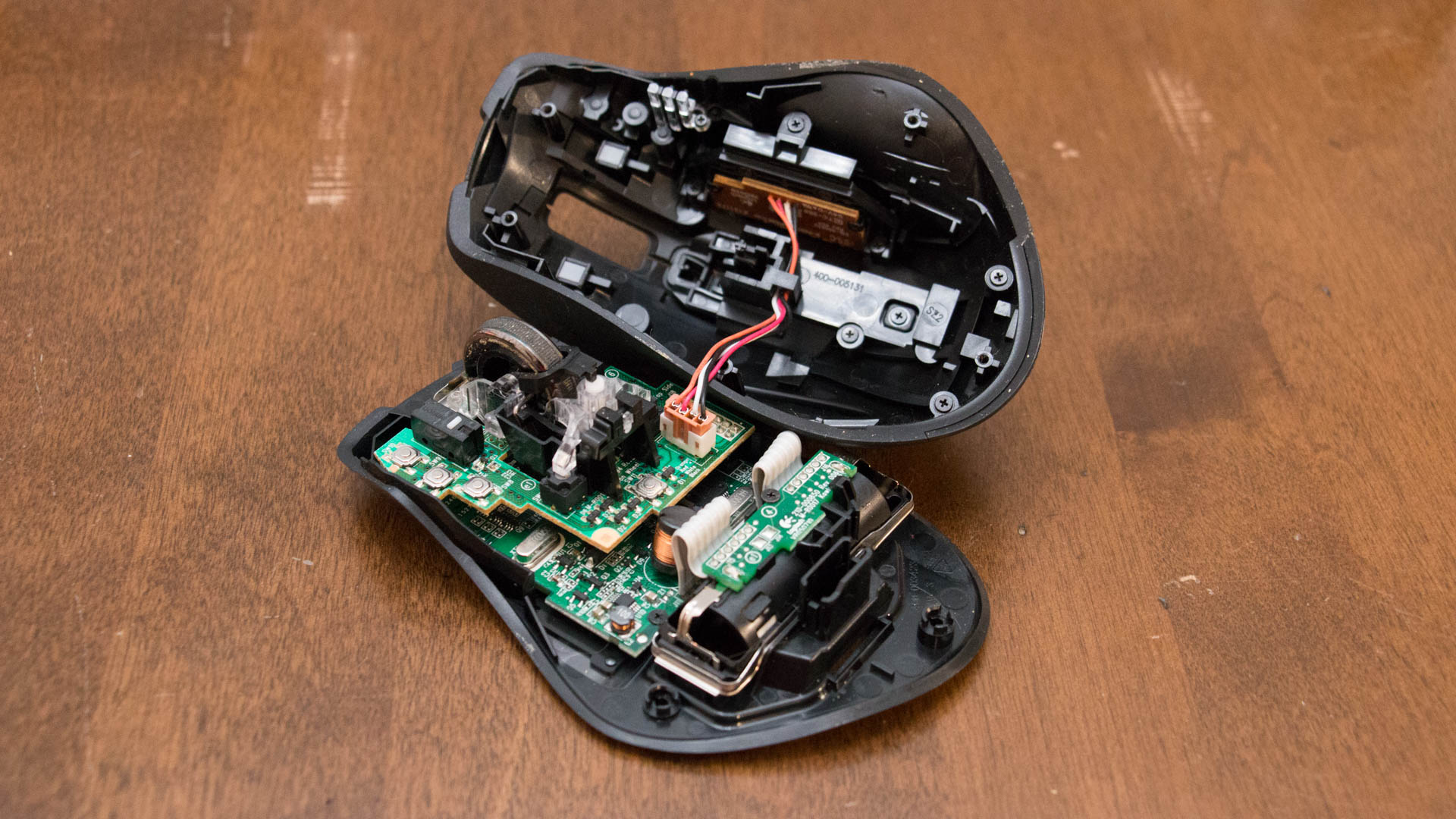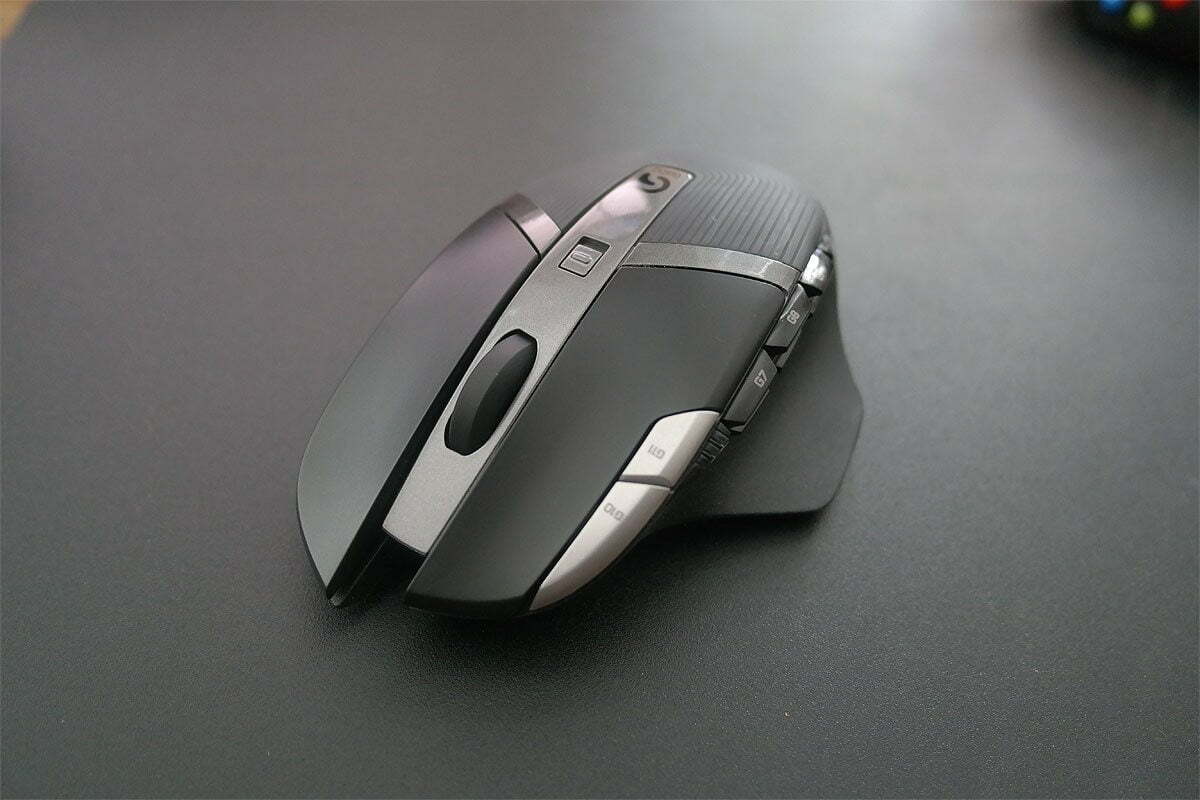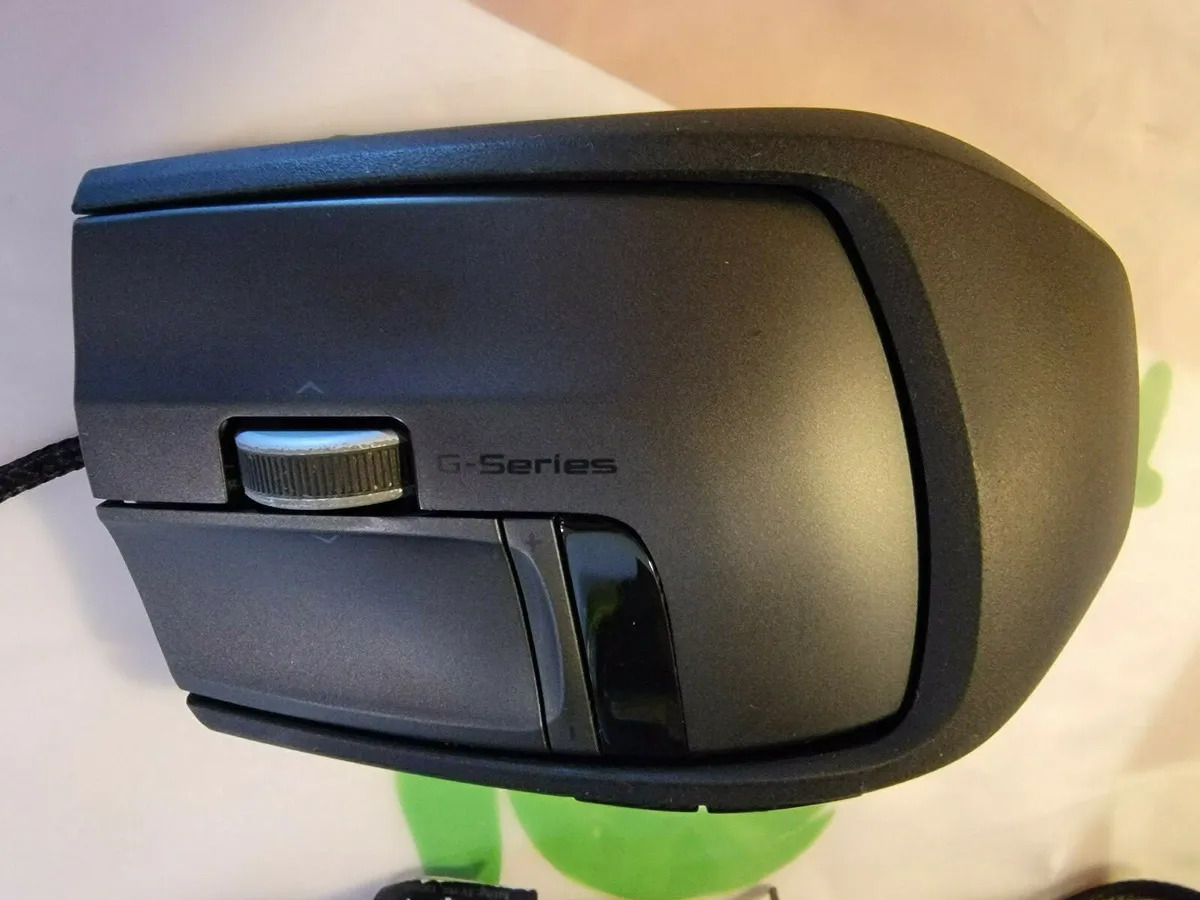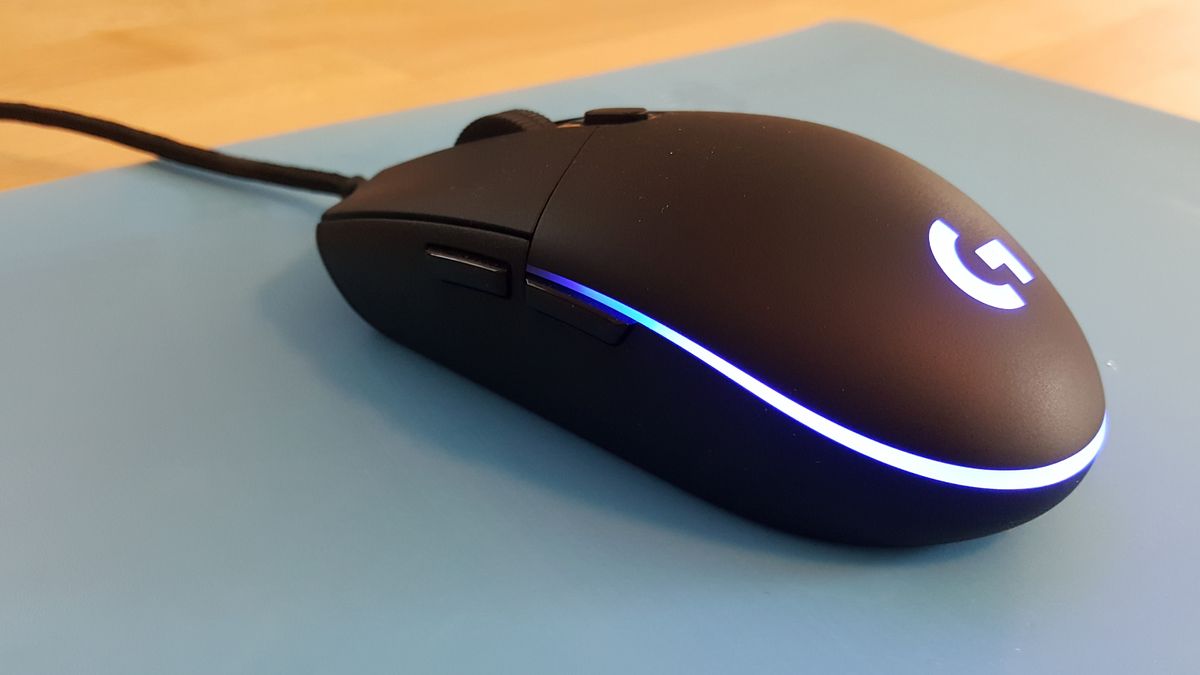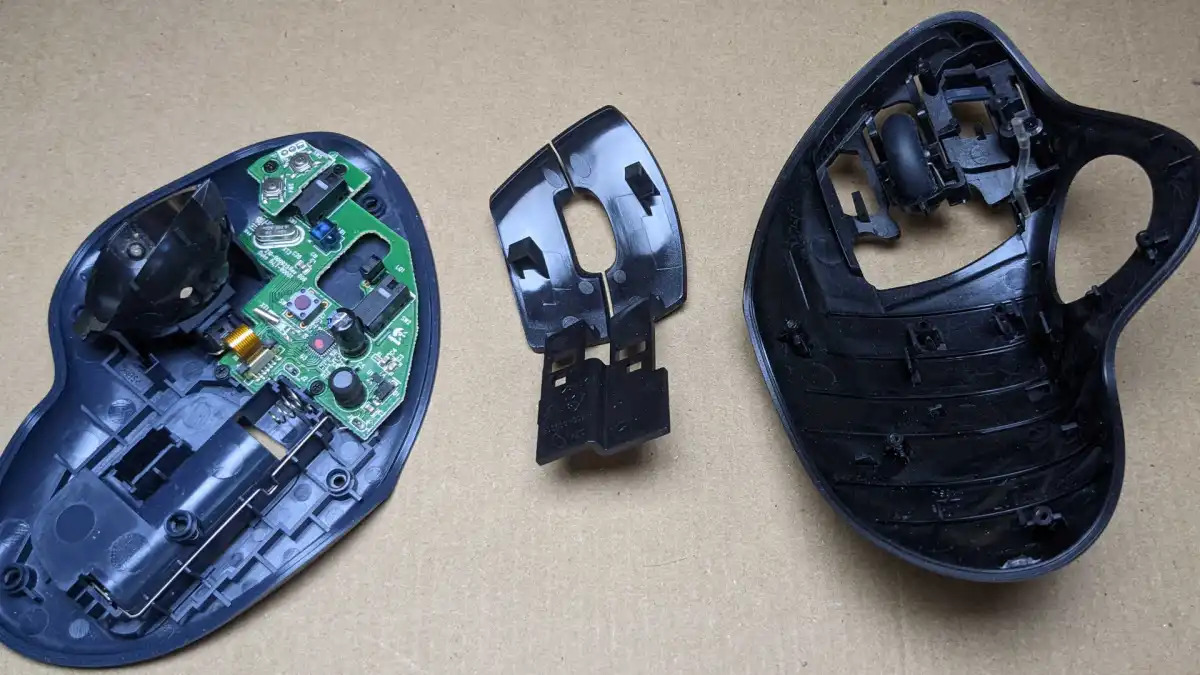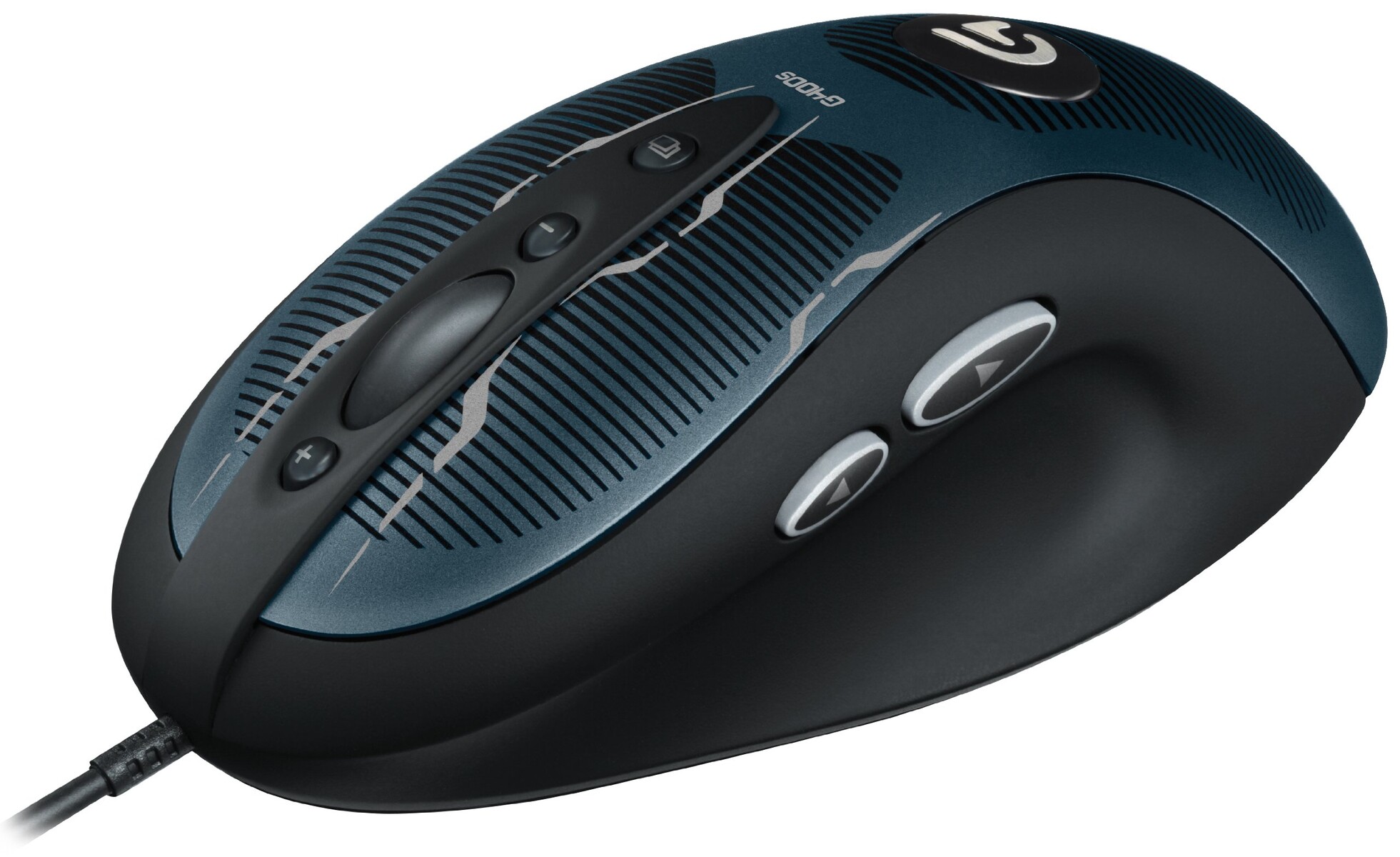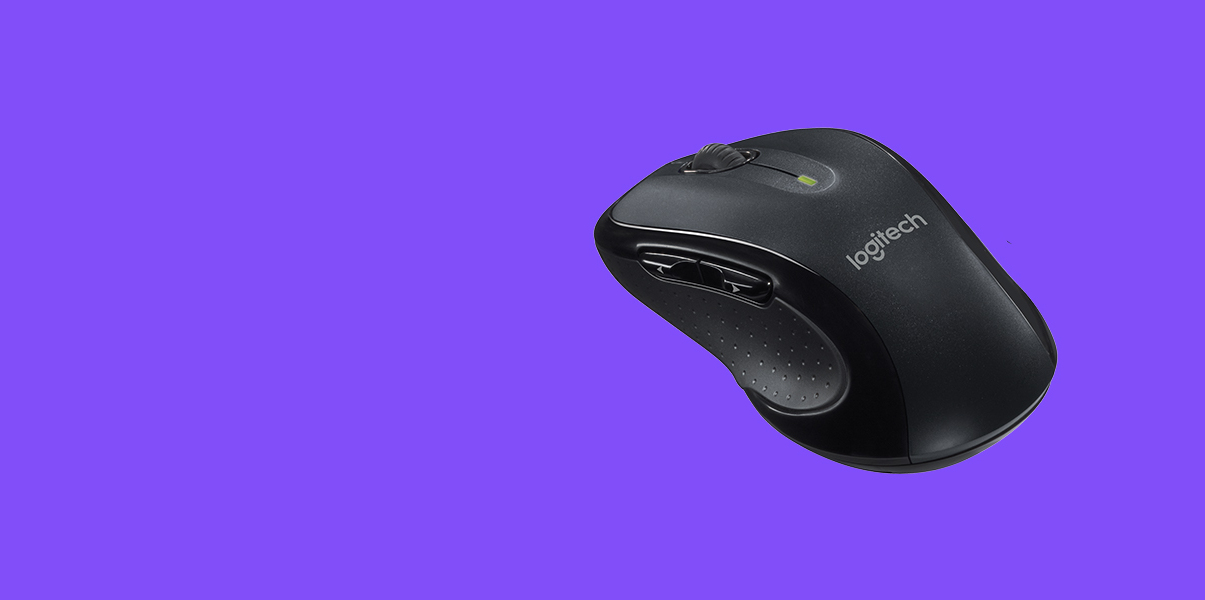Introduction
Welcome to the world of DIY mouse repair! If you’re experiencing issues with your Logitech mouse, such as scrolling problems or unresponsive buttons, you may be wondering if it’s possible to disassemble it and fix the problem yourself. The good news is that with a little bit of patience, some basic tools, and the right set of instructions, you can learn how to disassemble your Logitech mouse and troubleshoot any issues.
In this guide, we will provide you with a step-by-step tutorial on how to disassemble your Logitech mouse. However, it’s essential to note that disassembling your mouse may void the warranty, so make sure to check the warranty information before attempting any repairs. Also, keep in mind that disassembling fragile electronic devices requires caution and precision, so proceed at your own risk.
This guide is specifically focused on disassembling Logitech mice, but the general principles can apply to other mouse models as well. So, let’s get started by gathering the necessary tools for the disassembly process!
Required Tools
Before you begin disassembling your Logitech mouse, it’s important to have the right tools on hand. Here are the essential tools you’ll need:
- Small Phillips head screwdriver: Most Logitech mice use small screws to hold them together, so having a Phillips head screwdriver of the appropriate size is crucial.
- Plastic opening tools: These tools are designed to help you safely remove the casing without damaging the delicate components inside. It’s recommended to use plastic opening tools to avoid scratches or other damage.
- Tweezers: Tweezers will come in handy when manipulating small parts and connectors inside the mouse.
- Cotton swabs: These are useful for cleaning delicate components during the disassembly process.
- Isopropyl alcohol: Isopropyl alcohol is an effective cleaner for removing dirt and grime from the components of your mouse. Make sure to use a high concentration (90% or higher) for best results.
- Clean, lint-free cloth: You’ll need a soft, lint-free cloth to wipe down the components and ensure they’re completely dry before reassembly.
With these tools in hand, you’ll be well-prepared to tackle the disassembly process and potentially fix any issues with your Logitech mouse. Remember to work in a clean, well-lit area to avoid losing small screws or damaging any components. Now that you have everything you need, let’s move on to the next step: removing the battery.
Step 1: Removing the Battery
The first step in disassembling your Logitech mouse is to remove the battery. This is an important safety precaution to avoid accidentally damaging any components or getting an electrical shock while working on the device. Here’s how to remove the battery:
- Turn off your Logitech mouse if it has a power switch. This will prevent any electrical activity while you work on disassembling the device.
- Locate the battery compartment on the underside of the mouse. Depending on the model, it may have a slide switch or a release latch.
- If your mouse has a slide switch, simply slide it to the “Open” or “Unlock” position to release the battery compartment.
- If your mouse has a release latch, press it down or slide it in the direction indicated to unlock the battery compartment.
- Once the battery compartment is unlocked, gently lift or slide the compartment cover to open it.
- Remove the battery from the compartment and set it aside in a safe place.
It’s important to handle the battery with care and dispose of it properly if it’s no longer working. Depending on the battery type, you may need to recycle it at a designated recycling center. Now that you have successfully removed the battery, you’re ready to move on to the next step: removing the screws.
Step 2: Removing the Screws
Now that you’ve safely removed the battery, it’s time to remove the screws that hold the Logitech mouse together. Keep in mind that the number and placement of screws may vary depending on your mouse model. Follow these general steps to remove the screws:
- Examine the underside of your Logitech mouse and look for any visible screws. They are typically small and may be hidden under stickers or rubber feet.
- Use a small Phillips head screwdriver of the appropriate size to carefully unscrew the screws. Make sure to apply gentle, even pressure and avoid stripping the screws.
- Place the screws in a safe container or storage bag to prevent them from getting misplaced during the disassembly process.
- Continue removing screws until all of them have been taken out.
It’s important to keep track of the screws and their respective locations as some models may have different screw lengths or types. Taking photos or making notes can help you remember where each screw belongs during reassembly. Once you’ve successfully removed all the screws, it’s time to move on to the next step: opening the mouse casing.
Step 3: Opening the Mouse Casing
With the screws removed, it’s time to open the casing of your Logitech mouse. Opening the casing will give you access to the internal components and allow you to proceed with further disassembly or troubleshooting. Here’s how to open the mouse casing:
- Take your plastic opening tools and carefully insert them between the seams of the mouse casing.
- Gently pry open the casing, starting from one edge and gradually working your way around the perimeter.
- Be cautious while applying pressure to avoid damaging any internal components or breaking the plastic clips that hold the casing together.
- As you separate the two halves of the casing, you may hear or feel slight resistance from clips or tabs. Take your time and proceed with caution to avoid any damage.
- Continue separating the casing until you can fully remove one half, exposing the internal components of the mouse.
Once the casing is open, you may notice a small ribbon cable or wires connecting the top and bottom halves. Take care not to pull or strain these cables as you proceed with the disassembly. If needed, consult the specific disassembly instructions for your mouse model to ensure the safe removal of any interconnecting components. With the casing open, you’re ready to move on to the next step: removing the scroll wheel.
Step 4: Removing the Scroll Wheel
Now that you have successfully opened the casing of your Logitech mouse, you can proceed to remove the scroll wheel. The scroll wheel allows you to navigate through documents and web pages. Follow these steps to remove the scroll wheel:
- Locate the scroll wheel assembly in the center of the mouse. It is typically positioned between two buttons.
- Gently lift the scroll wheel assembly or pry it up from the casing using your plastic opening tools. Take care not to damage any surrounding components.
- If the scroll wheel assembly is connected to the casing with clips, carefully unclip it using your tweezers or by applying gentle pressure.
- If the scroll wheel assembly is connected with wires or a ribbon cable, check for any connectors or plugs that hold it in place. Carefully unplug these connectors to detach the scroll wheel assembly.
- Once the scroll wheel assembly is disconnected, set it aside in a safe place.
Take a moment to inspect the scroll wheel assembly for any build-up of dirt or debris. If necessary, use a cotton swab moistened with isopropyl alcohol to clean the scroll wheel and its surrounding components. This can help improve scrolling performance and responsiveness. With the scroll wheel removed, you’re ready to move on to the next step: detaching the buttons.
Step 5: Detaching the Buttons
With the scroll wheel removed, you can now focus on detaching the buttons from your Logitech mouse. The buttons are an essential part of the mouse’s functionality, allowing you to perform various actions with a click. Follow these steps to detach the buttons:
- Identify the buttons on your mouse, typically located on the top surface or sides.
- Gently lift or pry up the buttons using your plastic opening tools. Be careful not to apply excessive force to avoid damaging the buttons or their connectors.
- If the buttons are held in place by clips, carefully unclip them one by one using your tweezers or by applying gentle pressure.
- If the buttons are connected with wires or a ribbon cable, look for any connectors or plugs that hold them in place. Carefully unplug these connectors to detach the buttons.
- Set the buttons aside in a safe place as you continue with the disassembly process.
This is also an excellent opportunity to inspect the buttons and clean them if necessary. Use a cotton swab dipped in isopropyl alcohol to remove any dirt, grime, or sticky substances that may affect the button’s performance. Remember to let them dry completely before reassembly. With the buttons detached, you can now move on to the next step: disconnecting the circuit board.
Step 6: Disconnecting the Circuit Board
As you move forward with the disassembly of your Logitech mouse, it’s time to disconnect the circuit board. The circuit board houses the electronic components that control the mouse’s functionality. Follow these steps to disconnect the circuit board:
- Locate the circuit board inside the mouse casing. It is the main component responsible for processing input from the buttons and transmitting that data to the computer.
- Inspect the circuit board for any connectors, plugs, or ribbons that connect it to other parts of the mouse. These connectors may vary depending on your mouse model.
- Carefully unplug the connectors or remove any ribbon cables that are holding the circuit board in place. Take note of the positions of the connectors to ensure proper reassembly later.
- If the circuit board is secured to the casing with screws, use your small Phillips head screwdriver to unscrew them and detach the board.
- Once the circuit board is disconnected and free from any attachments, gently lift it out of the mouse casing and set it aside in a safe place.
Take a moment to inspect the circuit board for any signs of damage or excessive dirt. If needed, use a can of compressed air or a soft brush to remove any dust or debris that may have accumulated on the board. Additionally, ensure that there are no loose screws or small components left inside the mouse casing before proceeding. With the circuit board disconnected, you’re ready to move on to the next step: cleaning the components.
Step 7: Cleaning the Components
Now that you have disassembled the important components of your Logitech mouse, it’s time to thoroughly clean them. Over time, dirt, dust, and grime can accumulate on the various parts, affecting their performance. Follow these steps to clean the components:
- Start by using a soft, lint-free cloth to gently wipe down the mouse casing and remove any surface dirt or debris.
- If there are any stubborn stains or sticky residue on the casing, dampen a cotton swab with isopropyl alcohol and gently scrub the affected areas.
- Next, clean the buttons, scroll wheel, and any other detached components using isopropyl alcohol and cotton swabs. Ensure that you clean around the crevices and edges to remove any dirt or buildup.
- If there is visible dirt or debris on the circuit board, carefully use a can of compressed air to blow away any loose particles. Avoid using excessive force that could damage delicate components.
- Inspect the pins and connectors on the circuit board for any corrosion or buildup. If necessary, use a soft brush or cotton swab dipped in isopropyl alcohol to clean them.
- Allow all the cleaned components to fully dry before proceeding with the reassembly process. This will help ensure optimal performance and prevent any issues caused by moisture.
Cleaning the components is an essential part of the disassembly process as it helps remove any dirt or debris that may affect the functionality of your Logitech mouse. Once you’re satisfied with the cleanliness of all the components, you’re ready to move on to the final step: reassembling the mouse.
Step 8: Assembling the Mouse
After successfully cleaning all the components, it’s time to reassemble your Logitech mouse and put everything back together. Follow these steps to assemble your mouse:
- Begin by taking the circuit board and carefully placing it back into the mouse casing. Ensure that the components align properly and any connectors or screws line up with their respective openings.
- If there were any screws that held the circuit board in place, use your small Phillips head screwdriver to secure them back in their original positions.
- Next, reattach the buttons, scroll wheel, and any other detached components. Make sure they fit snugly into their respective slots or connectors.
- If any of the components were held in place with clips, gently snap them back into position using your fingers or plastic opening tools.
- Carefully align the two halves of the mouse casing and press them together. Ensure that all the clips or tabs are securely fastened.
- If your mouse had screws that held the casing together, use your small Phillips head screwdriver to tighten them in place.
- Insert the battery back into the battery compartment and close the cover securely.
Once you have reassembled your Logitech mouse, it’s time to test it to ensure everything is working correctly. Turn on your mouse and check if the buttons, scroll wheel, and other functions are functioning as expected. If everything is in order, congratulations! You have successfully disassembled and reassembled your Logitech mouse.
If you encounter any issues or if the mouse is still not functioning correctly, you may need to consult professional assistance or contact Logitech support for further guidance. Remember, always follow safety precautions and be careful while disassembling or repairing electronic devices.
Conclusion
Congratulations on successfully disassembling and reassembling your Logitech mouse! By following the step-by-step guide and using the necessary tools, you were able to troubleshoot any issues and clean the internal components to improve the performance of your mouse.
Remember, disassembling your mouse may void the warranty, so it’s essential to check the warranty information before attempting any repairs. Additionally, always exercise caution and work in a clean, well-lit area to avoid damaging any components or losing small screws.
If you encounter any difficulties during the disassembly or if your mouse is still not functioning properly after reassembly, it is recommended to seek professional assistance or contact Logitech support for further guidance. They have the expertise to identify and resolve complex issues.
By learning how to disassemble your Logitech mouse, you have gained valuable knowledge and skills that can be applied to other electronic devices. Remember to handle electronic components with care and dispose of any batteries or damaged parts responsibly.
We hope that this guide has been helpful in assisting you with the disassembly and reassembly process of your Logitech mouse. Enjoy the improved performance of your mouse and continue exploring the world of DIY repairs!







